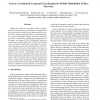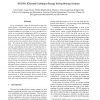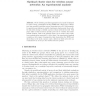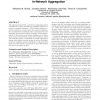65 search results - page 7 / 13 » How can architecture help to reduce energy consumption in da... |
ICDCSW
2006
IEEE
14 years 2 months ago
2006
IEEE
Mobile robot teams are particularly suited to applications where infrastructure is unavailable or damaged since they can be used to quickly form an infrastructure-less mobile ad h...
HPCA
2008
IEEE
14 years 8 months ago
2008
IEEE
Power consumption within the disk-based storage subsystem forms a substantial portion of the overall energy footprint in commodity systems. Researchers have proposed external cach...
ADHOCNETS
2009
Springer
14 years 3 months ago
2009
Springer
Node clustering and data aggregation are popular techniques to reduce energy consumption in large WSNs and a large body of literature has emerged describing various clustering prot...
MOBIDE
2003
ACM
14 years 1 months ago
2003
ACM
This paper presents TiNA, a scheme for minimizing energy consumption in sensor networks by exploiting end-user tolerance to temporal coherency. TiNA utilizes temporal coherency to...
JSA
2008
13 years 8 months ago
2008
Commercial designs are currently integrating from 10 to 100 embedded processors in a single system on chip (SoC) and the number is likely to increase significantly in the near fut...




